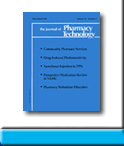 |
 |
Phenazopyridine-Induced Toxicity in an Elderly Patient Receiving a Prolonged Regimen of Therapeutic Doses
Katie E Ronald, Asmeret Demissie
To request full article click here.
Objective: To report a case of yellow skin pigmentation, acute renal failure, methemoglobinemia, and hemolytic anemia in a patient receiving a prolonged regimen of therapeutic doses of phenazopyridine.
Case Summary: A 74-year-old female was admitted to the hospital with respiratory distress and acute renal failure, admission serum creatinine of 4.5 mg/dL (reference range 0.7-1.4 mg/dL), and blood urea nitrogen of 80 mg/dL (6-22 mg/dL). Upon admission, she had yellow skin pigmentation, methemoglobinemia with a methemoglobin level of 18.8% (0-3%), and hemolytic anemia with hemoglobin of 6.9 g/dL (12-16 g/dL), reticulocyte count of 5.1% (0.5-2%), and peripheral blood smear revealing Heinz body hemolysis. She had been taking phenazopyridine 200 mg 3 times per day for the 3 weeks prior to admission. Phenazopyridine was discontinued, and the patient was treated with intravenous methylene blue for methemoglobinemia and supportive care for acute renal failure, yellow skin discoloration, and hemolytic anemia. After 5 days in the hospital, the patient was discharged with baseline laboratory values and baseline respiratory status. An objective causality assessment revealed that acute renal failure was possibly and methemoglobinemia and hemolytic anemia were probably associated with phenazopyridine.
Discussion: Phenazopyridine toxicity may occur with acute overdose or chronic administration of therapeutic doses. Severe toxicity with phenazopyridine is relatively uncommon, but when it does occur it may present as a serious clinical picture, with adverse drug reactions (ADRs) such as methemoglobinemia, hemolytic anemia, acute renal failure, and hepatitis. Removal of phenazopyridine and provision of supportive treatment for the ADRs usually results in reversal of the complications and return to baseline function. Severe cases of methemoglobinemia may need to be treated with intravenous methylene blue in addition to supportive care. This case presents the importance of understanding the risks with long-term use of therapeutic doses of phenazopyridine, especially in geriatric patients.
CONCLUSIONS: The geriatric population and patients with renal insufficiency are at increased risk of phenazopyridine toxicity because of decreased renal clearance of phenazopyridine and its metabolites.
J Pharm Technol 2013;29:130-4
To request full article click here.
|
|
|
||
|

